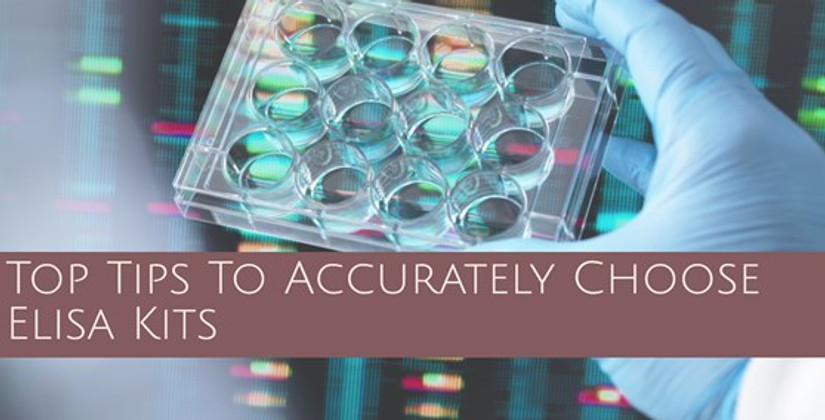Top Tips To Accurately Choose Elisa Kits
Jul 6th 2023
In the last 30 years, ELISA, which stands for enzyme-linked immunosorbent assay, has evolved into an essential part of many types of study and has been shown to have many uses, such as finding pathogens in food and the environment and testing for HIV and SARS-CoV-2 (COVID-19) antibodies.
Today, ELISA is widely regarded as the go-to method for measuring the amount of an antigen (a toxin or other alien substance) in a specimen.
But given the wide variety of Elisa kits, many researchers need help choosing the perfect kit. Hence, this Elisa development guide dives into the tips to accurately select your next Elisa kit.
Understand the Different Assay Formats
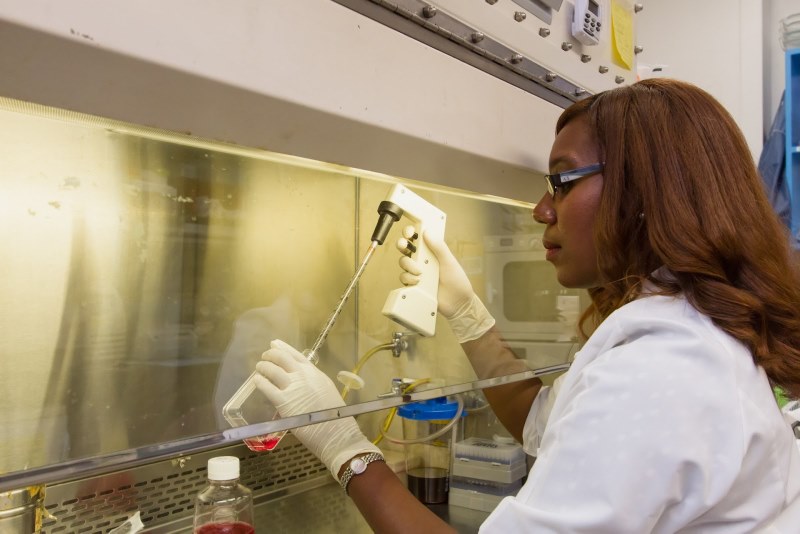
Naturally, the first step to choosing the fitting Elisa kit is to appreciate the different assays out there fully. You want to start by asking yourself a couple of questions as outlined below:
Direct ELISA may be suitable for you if you want to quickly identify an immune response to an antigen, and signal amplification is not a top priority. Indirect ELISA is preferable for determining the total antibody concentration due to its higher specificity and versatility.
You can get more information about the four different ELISA types by visiting our online Technical Resource Center.
Sample Type and Species
Commercial ELISA kits are easily accessible for regularly utilized species like humans, mice, and rats. A restricted supply of Elisa kits will be available for use with animals that are uncommon, such as monkeys, dogs, or pigs. In this case, you should pick the kit tested on species similar to your sample species.
As a general guideline, if the sequences are more than 90 percent identical, they will cross-react with the species of your choice.
Always verify does EDTA interferes with Elisa before using it. Validation of ELISA kits is possible for numerous sample types, such as cell culture supernatants, serum, plasma (heparin, EDTA), cell lysate, and tissue.
The Analyte You Want to Detect
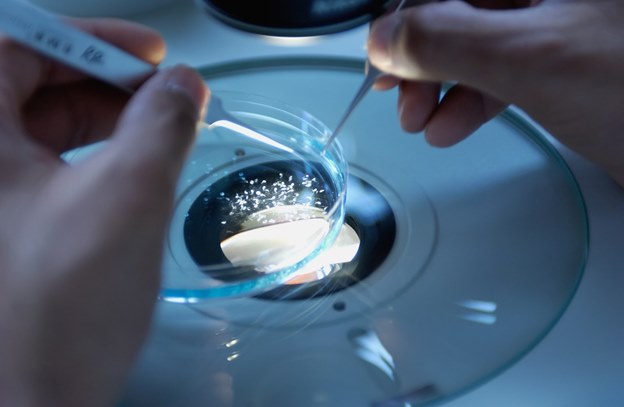
You'll have to understand the type of analyte (typically a protein) you wish to detect. A sandwich ELISA can usually serve to find major proteins with multiple epitopes, like cytokines, in a sample. On the other hand, a competitive ELISA is suitable for identifying tiny compounds such as hapten.
Most commercial ELISA kits have been verified using culture and serum/plasma supernatants. Thus, It is critical that you carefully review the product instructions to confirm that the kit is suitable for your sample. For instance, the method of plasma sample collection (heparin or EDTA) can impact the selection of an ELISA reagent.
Other things, like hemolysis and the level of lipids in the specimen, can also affect how well the test works. Therefore, think about these things before settling on an ELISA kit. Assuming you want to ensure that your ELISA kit is sensitive and appropriate for your samples, you should get a small test kit and run several preliminary tests.
The Objective of the Analysis
The enzyme-linked immunosorbent assay can prove helpful in either qualitative or quantitative research. Quantitative ELISA uses a standard curve to represent how much of the analyte is within the sample, while qualitative ELISA returns a positive or negative outcome.
To what extent, beyond simple presence/absence detection, do you need to determine the analyte concentration in your sample? You can do a qualitative or quantitative ELISA study, depending on what you hope to learn from the test.
The Range of Antibody Pairs Available
Suppose you're considering making a sandwich ELISA. In that case, the pre-coated ELISA kit will use a matched antibody pair, with the capture and detection antibodies binding to a separate, non-interconnected epitope of the antigen particle.
The two main categories of antibodies are monoclonal and polyclonal. It is occasionally beneficial to use a polyclonal antibody for collection and a monoclonal antibody for identification in sandwich ELISA.
Thus, It is usually preferable to use polyclonal and monoclonal antibody pairs to avoid competing for the same antigen attachment spot.
Sandwich of exceptional quality ELISA kits will have been thoroughly tested to determine the best antibody combination for analyte detection.
Those curious about the antibodies used in a given ELISA kit can always ask the manufacturers.
The Level of Sensitivity Required
What are your overall ideas concerning the concentration of the analyte of interest in your sample?
Suppose you don't have any clue surrounding the concentration; the smart move would be to go for an Elisa kit with a broad detection range.
When you know that your specimen has exceptionally minute quantities of the target analyte, you should get Elisa kits that are highly sensitive for detection.
Nevertheless, suppose your analyte's concentration is exceptionally high; you may need to dilute it to adjust to the Elisa kit's detection range, which is why it's vital to learn how to dilute serum samples for Elisa.
Also, the fitting Elisa kits are designed with proprietary blocking and coating technology to possess picogram-standard sensitivity, low-level background, and high signal. The right Elisas matched with a suitable sample with as much as detecting single-digit picogram limits.
Hence, you should always ascertain the assay range and sensitivity before buying any Elisa kit. But bear in mind that the higher its sensitivity, the more limited its detection range.
The Specificity of the Kit
Perhaps the most challenging problem encountered following an Elisa is when you discover the potent signal you found is a false positive outcome. You have a cross-reactivity on your hands. In layperson's terms, the antibodies have bonded to some third-party molecules, not the target analyte.
On the contrary, interferences occur if elements in the specimen matrix influence antibody-antigen reaction, hindering the antibodies from locating the target analyte.
Sounds frustrating, right?
Luckily, when you choose the perfect Elisa kit, you'll also find it optimized for little to no interference and cross-reactivity with your sample. In this case, it's not solely about high specificity but also the appropriate range.
Remember, some manufacturers and custom protein synthesis companies indicate any possibilities of cross-reactivity on their Elisa kits.
The Specificity of the Kit
Perhaps the most challenging problem encountered following an Elisa is when you discover the potent signal you found is a false positive outcome. You have a cross-reactivity on your hands. In layperson's terms, the antibodies have bonded to some third-party molecules, not the target analyte.
On the contrary, interferences occur if elements in the specimen matrix influence antibody-antigen reaction, hindering the antibodies from locating the target analyte.
Sounds frustrating, right?
Luckily, when you choose the perfect Elisa kit, you'll also find it optimized for little to no interference and cross-reactivity with your sample. In this case, it's not solely about high specificity but also the appropriate range.
Remember, some manufacturers and custom protein synthesis companies indicate any possibilities of cross-reactivity on their Elisa kits.
Detection System
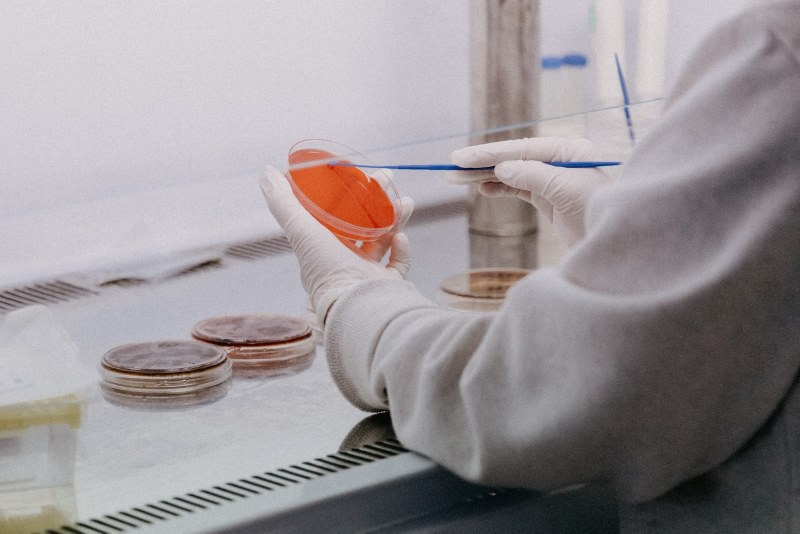
ELISA uses various detection technologies, including colorimetric, fluorescent, and luminescent approaches. Immobilizing the analyte on a surface, applying an enzyme label, and using a substrate that is specific to that enzyme are the three essential steps of each ELISA. However, picking an adequate enzyme and a compatible substrate is crucial.
Additionally, you must select the microplate, the detection instrument, and the parameters for the enzyme-substrate reaction carefully.
Amount of Sample
The quantity of sample required by ELISA kits typically ranges from 100ul to 10ul. If you have limited samples or your model is particularly valuable, you should look for ELISA kits with a lower minimum sample volume requirement.
Data on Recovery and Linearity
Experiments measuring recovery and linearity help evaluate the effectiveness of Elisa kits. Recovery determines if sample matrices affect analyte detection. So remember, higher recoveries are preferable.
The linear degree of the analyte's dose response in a given Elisa sample diluent recipe is determined by the dilution's linearity. The samples' concentrations have to be comparable throughout all dilutions.
Most vendors include data on recovery and linearity within the device specifications. In addition, several extra essential metrics, including sensitivity and dynamic range, are also available here.
But it is possible for Elisa kits produced by different suppliers to have variable parameter data. You can meticulously review these parameter data, especially recovery and linearity data, to select the best Elisa kit.
Reference
You can find ELISA test kits previously used by researchers who, in turn, published them in relevant scientific literature. These battle-tested kits are typically considered to be more reliable. Moreover, there is an overall trend toward increased dependability among certified suppliers.
The Testing Protocol
Performing an ELISA test will be less complicated if you choose ELISA kits with straightforward protocols, user-friendly operations, and rapid reaction times.
Suppose you apply these tips; you still need to implement some tips to achieve Elisa's success.
Continue reading to find out…
Making the Most of Your Chosen Elisa Kit
1. Select Your Surface Carefully
Since there is such a large variety of coating proteins are used in ELISA, many specialized microplates with a wide range of binding capabilities are commercially available. When establishing a new assay, it is essential to evaluate a variety of surfaces to decide which one is most suited for the antibody or antigen you'll examine.
Despite varying binding qualities, most plates are made of the same plastics, like polyurethane or polyvinyl chloride. The best approach is to test plastics with weak, moderate, and strong binding properties. Coat is another crucial consideration when choosing a plastic, particularly if you wish to examine many samples.
In addition, the molecule employed in coating the plate needs titrating correctly to identify the optimal concentration that will partake in the test.
2. Remember to Normalize
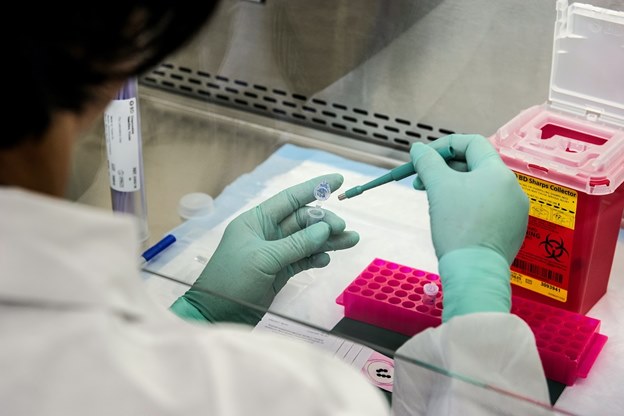
Normalization is a statistical technique that reduces the significance of individual differences between plates or trials to get more consistent findings. So you must check how to normalize Elisa data.
Comparing the results of each serum sample to the negative serum control is a straightforward technique to equalize between investigations where serum is employed as the analyte.
When this is done, the possibility of variability caused by external influences, including room temperature and development duration, is reduced to a minimum.
Even if this is not an exact quantification, there are many situations in which an absolute number is not required. Even so, it is possible to generate a reliable data set while comparing samples.
3. Avoid Blocking Surprises
Researchers often test out multiple blocking agents throughout the creation of an experiment before settling on one that provides the optimum signal-to-noise ratio Elisa calculation. The batch-to-batch variance of certain blockers is a consideration many sometimes overlook while making this decision.
Most commonly, blockers are biological substances such as bovine serum albumin (also known as BSA).
BSA is a very efficient blocker in a wide variety of assays; nevertheless, because of the reagent's nature, there can be significant variation across batches; for example, some models may include high levels of cross-reactive antibodies that will disrupt an experiment, while other lots may contain very few or none at all.
In light of this, before you settle on a blocker like BSA or fetal calf serum, it is prudent to conduct several tests on different batches to determine whether or not the outcomes are consistent.
In fact, this is a crucial factor to consider, and for some folks, it is frequently the reason for numerous failed tests after exhausting the initial batch of samples.
4. Batch Test Your Secondary Antibodies
Similarly to blocking agents, secondary antibody lots may differ. While their general activity level might be the same, the required quantity might alter from sample to sample. It is vital to do a quick test on the prior lot of secondary antibodies before purchasing a new batch to ensure that the quantity used is still adequate.
Assuming that the same dilution can prove helpful can lead to unpleasant results, such as a significant increase in background noise after switching batches.
Conclusion
In response to the growing interest in ELISA testing, a variety of commercially produced ELISA test kits are now on sale for diagnostic applications. Therefore, accurate sample analysis necessitates selecting the appropriate ELISA test kit from the many available. Consequently, you must consider the criteria above when selecting ELISA kits for your applications.
Still struggling to figure out which ELISA kit will work best with your model?
Biomatik is an industry leader among Elisa kit manufacturers, antibody production services, and gene synthesis services, and you can reach us for further technical assistance if necessary.

